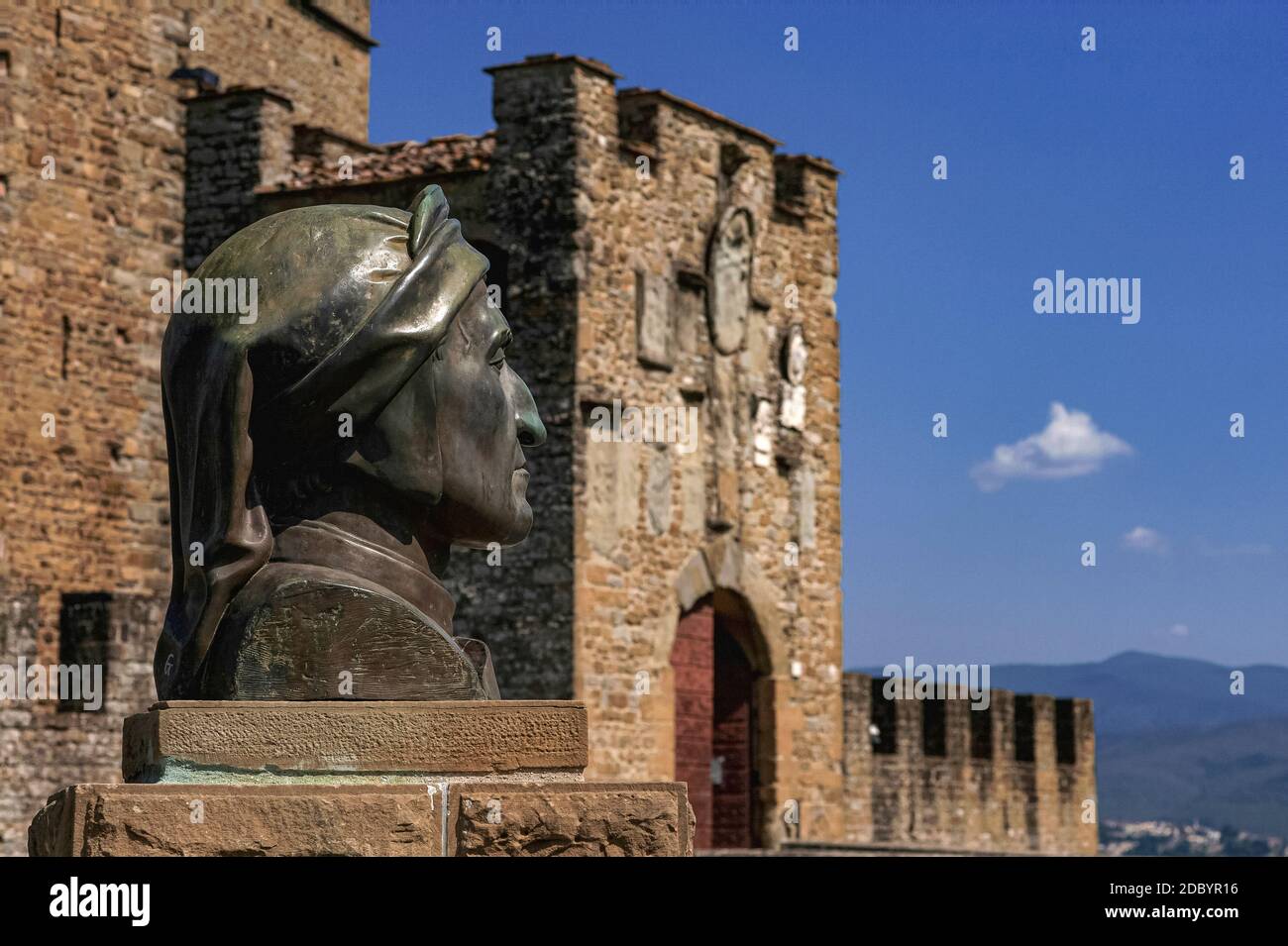Bronze bust of Italian poet Dante Alighieri (c. 1265-1321) by the Munition Tower, or Antiporta della Munizione, of the medieval Castle of the Guidi Counts, or Castello dei Conti Guidi, at Poppi, Tuscany, Italy. Dante fought at the nearby Battle of Campaldino for the victorious Florentines in 1289. Poppi castle was built around 1274. The Munition Tower (in the background) was added as an outer defence in the 1400s.

Image details
Contributor:
Terence Kerr / Alamy Stock PhotoImage ID:
2DBYR16File size:
34.5 MB (2 MB Compressed download)Releases:
Model - no | Property - noDo I need a release?Dimensions:
4256 x 2832 px | 36 x 24 cm | 14.2 x 9.4 inches | 300dpiDate taken:
4 August 2011Location:
Castello dei Conti Guidi / Poppi Castle, Poppi, Tuscany, Italy.More information:
This image could have imperfections as it’s either historical or reportage.
Poppi, Tuscany, Italy: a bronze bust of the poet Dante Alighieri (c. 1265-1321) by the Munition Tower entrance to the medieval Castello dei Conti Guidi (Castle of the Guidi Counts) recalls his part in the nearby Battle of Campaldino in 1289. Dante, then aged 24, is believed to have fought in the victorious Florentine Guelph cavalry against Ghibelline forces from the city of Arezzo, a triumph that made Florence the leading power in Tuscany. The fortress was built around 1274 for Count Simone di Battifolle, head of the powerful Guidi family. Externally, it resembles Florence’s Palazzo Vecchio town hall, and it may have been a prototype for that 1299 design by Arnolfo di Cambio. The Antiporta della Munizione, seen here in the background, was added in the late 15th century as an outer defence tower housing a drawbridge spanning the deep moat. The tower leads to the Porta del Leone (Lion Gate), now the castle’s main entrance. D0661.A7908